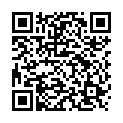|
|
|
| Module code: WIBb21-340 |
|
|
30VS (30 hours) |
|
5 |
| Semester: 3 |
| Mandatory course: yes |
Language of instruction:
German |
Assessment:
Exam
[updated 11.06.2025]
|
|
The total student study time for this course is 150 hours.
|
Recommended prerequisites (modules):
WIBb21-120
[updated 12.11.2025]
|
Recommended as prerequisite for:
WIBb21-530 Basics of Mechatronics and Hydraulics
WIBb21-540
WIBb21-730 Systems Engineering/ X in the Loop (HiL, SiL, MiL)
[updated 12.11.2025]
|
Module coordinator:
Studienleitung |
Lecturer:
Lehrbeauftragte der htw saar
Professor/innen des Studiengangs
[updated 12.11.2025]
|
Learning outcomes:
After successfully completing this module students will:
be able to recognize forces and force effects and represent them both in graphs and mathematically.
be able to derive equilibrium conditions and determine bearing forces and moments.
be able to determine the internal force and moment effects for given external forces.
know the physical principles of friction and be able to determine under which conditions a system with frictional forces is stable.
[updated 11.06.2025]
|
Module content:
Statics:
1. Force concept, force and moment effects on the basis of Newton´s axioms
2. Graphic and mathematical determination of resulting forces and moments
3. Applications with central and flat force systems, e.g. bearing forces
4. Normal forces, shear forces, internal moment effect
5. Beams, two-part systems and trusses
6. Friction
7. Centroid
[updated 11.06.2025]
|
Teaching methods/Media:
Lectures, digitally supported teaching,
self-study.
[updated 11.06.2025]
|
Recommended or required reading:
Holzmann, G./ Meyer H./ Schumpich G.: Technische Mechanik, Statik; 12. Auflage, Vieweg+Teubner Verlag, 2009
Böge, A.: Technische Mechanik Statik-Dynamik Fluidmechanik-Festigkeitslehre; 28. Auflage, Vieweg+Teubner-Verlag, 2009
Gross, D./ Hauger, W./ Schröder, J./ Wall, W.: Technische Mechanik 1 - Statik; 11. Auflage, Springer Verlag, 2011
Böge, A./ Schlemmer, W.: Aufgabensammlung zur Mechanik und Festigkeitslehre, 17. Auflage, Vieweg Verlag, 2003
[updated 11.06.2025]
|

